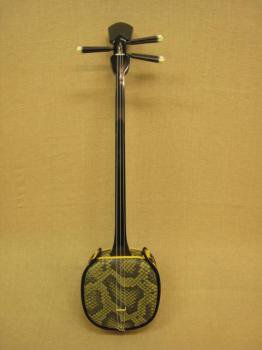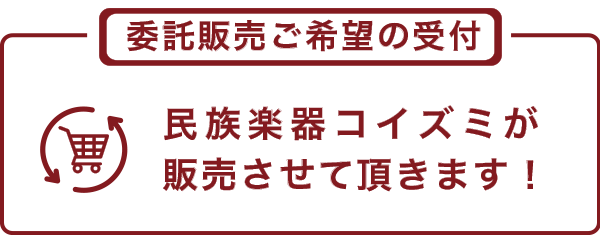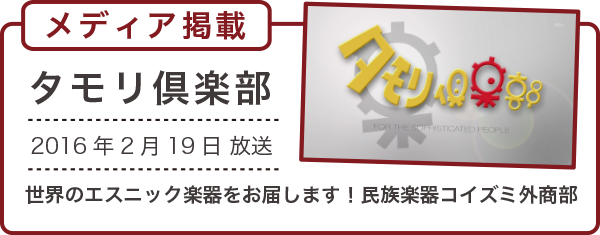沖縄を代表する楽器、三線。
パリッと張りがあり暖かく、どこかせつない沖縄三線の音色。
古典から民謡、ポップスまで南国を感じさせる独特な琉球音階で奏でられる音楽は老若男女を問わず人気です。
沖縄の工房より直接仕入れる三線は品質も高く、初めての方からベテランの方まで満足して頂けるように各種取り揃えております。
The Sanshin is a typical Okinawan musical instrument.
It has the crisp, warm, and somewhat melancholy tone.
The Sanshin is used not only for classical music, but also for folk songs and pop music. The music played in the unique Ryukyuan scale, which evokes a tropical atmosphere, is popular among people of all ages.
This Sanshin is made in Okinawan workshops and offer a high quality to satisfy both beginners and experienced players.
●特長/Features
・人工皮ですが、パリッと張りがあり本皮の三線にも劣らぬ音色です。
・本皮をご使用頂いている方にもオススメできます。
・本皮の三線が持ち込めない海外旅行時などにも持ち込み可能です。
・ツメ、ウマ、交換用弦が付いています。
・入門用の1本、気軽に持ち運べる2本目にもどうぞ!
Although it is artificial leather skin, it has a crisp and taut sound that is as good as that of a real leather one.
It is also recommended for those who already have a real leather Sanshin.
It is suitable for travel abroad, where a real leather one cannot be carried.
It can be used as an introductory one, or as a second one that can be easily carried around!
●付属品/Accessories:ツメ(プラスチック)、ウマ(プラスチック)、交換弦、ケース付き/plastic sanshin pick (tsume), plastic sanshin bridge, spare strings (1 set), soft case
※ケースの色は各種(黒・赤・緑・紺)があります。色の指定がある場合は備考にご記入下さいませ。
※入荷によってケースの色により在庫がない場合がございます、予めご了承ください。
*Various colors (black, red, green, and navy blue) are available for the case. If you specify the color, please fill in the remarks.
*Please note that some cases may be out of stock depending on the arrival.
●沖縄三線イメージ映像/Okinawan Sanshin Performance Video
知名定男/Sadao China
登川誠仁/Seijin Noborikawa
※各動画の楽器と商品は異なります。ご注意下さい。
* Please note that the instruments in each video differ from the actual product.
●三線の歴史/The History of Sanshin
14世紀〜15世紀頃、中国から渡来したとされています。中国には三弦という楽器があり、沖縄三線にとてもよく似た形状です。
17世紀に入ると琉球王朝で三線主取(さんしんぬしどり)という役職も設けられ、三線は更に発展・改良されて行きます。
元は士族階級のみが使用を許される楽器でしたが、やがて庶民にも手が届く楽器になり、いまでは沖縄を代表する楽器なりました。
本土の三味線は江戸時代に琉球との交流から三線が派生したと考えられ、本土では蛇皮・黒壇木などが手に入りにくかったため、犬・猫皮、花梨材・紅木を使用し改良されていったようです。
Sanshin is believed to have come from China around the 14th to 15th century. In China, there is a musical instrument called san-xian, which is very similar in shape to the Sanshin in Okinawa.
In the 17th century, the Ryukyu Dynasty established the position of “Sanshin-nushi-dori” (Sanshin master), and the Sanshin was further developed and improved.
Originally, only the warrior class was allowed to use this instrument, but it eventually became accessible to the common people and is now Okinawa's representative instrument.
The Shamisen on the mainland is thought to have been derived from exchanges with Ryukyu during the Edo period. Since it was difficult to obtain snakeskin and ebony on the mainland, the Shamisen was improved by using dog or cat skins, Chinese quince, and red sandalwood.
●三線の演奏方法/How to Play
・ウマは胴の下部から、指三本分の位置に立てます。
・ド・ファ・ド高にチューニングします(シ・ミ・シ高、など音の間隔が同じであれば問題ありません、自分の声の高さに合わせて下さい)
・左手で棹(ネック部分)を持ち棹の先端を肩の高さあたりに、足を軽く開いて胴は右太ももに置いて下さい。
・棹の持ち方は人差し指の付け根に棹のくぼみを軽くあてて下さい、握らないように注意です。
Place the bridge three fingers from the bottom of the body.
Tune the neck to the pitch of low C, middle F, high C (as long as the intervals between the notes are the same, such as low B, middle E, high B).
Hold the neck with your left hand and keep the top of the neck at shoulder height, with your feet lightly spread apart and the body of the instrument resting on your right thigh.
Hold the neck by placing the hollow of the neck lightly on the base of your index finger, but be careful not to grip it.
※三線を扱う注意点/Notice
・演奏後は弦のチューニングを緩め、高温多湿を避けて保管して下さい。
・ウマ(駒)をたてたままにすると皮の痛みの原因になりますので、必ずウマは倒して下さい。
・室内で練習する際、音量が気になる方は忍びゴマ(別売630円)をご使用下さい。
・皮破れなどの修理も承っておりますのでお気軽にご相談下さいね。
・その他、メンテナンスに関するご質問などございましたら、お気軽にご連絡下さいね。
After playing, loosen the strings and store it away from high temperature and humidity.
If you leave the bridge upright, it may damage the skin, so please be sure to tilt it down.
When practicing indoors, if you are concerned about the volume, please use the “shinobigoma” (mute bridge, sold separately, 630 yen).
We also offer repair services for broken skins, etc. If you have any other questions about maintenance, please feel free to contact us.
当店2Fでも
沖縄三線教室を行っております。
お気軽にご参加下さいね。
Okinawan Sanshin classes are held on the second floor of the shop. Please feel free to contact us.
※Can be shipped overseas (海外発送出来ます)
Please email us (info@koizumigakki.com) for shipping costs before ordering.
Copy and paste the name of the item on the e-mail.
Accepted payment methods are
Credit card and PayPal.
5 Steps from Purchase to Shipping
1. Please contact us via e-mail (info@koizumigakki.com) and inquire about shipping charges.
2. We will contact you with the shipping charge and total amount.
3. Once you have decided to purchase, we will create a dedicated shopping cart for you. Please enter the required information (address, phone number, etc.).
4. Please pay the total amount.
5. We will ship your order after confirming your payment.
Order Total = Merchandise Subtotal + Shipping Charge.
* Depending on the destination, deliveries may incur additional charges,
such as import duty, VAT (value-added tax), or customs duty.
* EMS shipping charge is dependent on item weight and destination
*In general, shipments take roughly one week to reach you after your order
has been placed. However, Shipments to some countries and regions may
experience delays. Also, some destinations cannot be shipped to.
ページのトップへ戻る/Back to page top





















